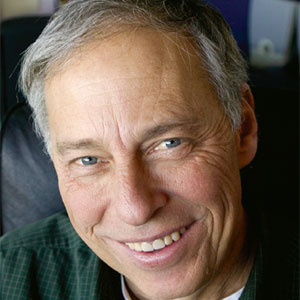The practice of making a sweeping statement about how everything is one way or the other. This is wrong and this is right. This matters and that does not. This guy’s a liar, and this one always tells the truth. The problem with this line of communication is two-fold: nothing is always one way or the other and we cannot know everything. I find myself making sweeping […]
AUDIO The Insider
Found 438 results
My friend, Sandy, is having good success adding a layer of ambience with a rear-positioned second set of speakers fed from an old Audio Research SDP1. You can read the late J. Gordon Holt’s evaluation of it here. Essentially, the device extracts the difference between the left and right channels, adds a bit of delay to […]
Paul McGowan: We’ve been discussing how to identify a ground loop. Now it’s time to fix what we’ve identified as a problem. But let me warn you of a couple of things: reread what I have written about identifying them (make sure it actually IS a ground loop), secondly, the cure can be dangerous if […]
Most interconnects are shielded to reduce noise and improve sound quality. Is the same true for speaker cables? Watch Now
For nearly 50 years, PS has prided itself on helping customers get what they need. It’s as simple as picking up the phone or dropping us an email. We’re here to help with whatever we can do. It’s just part of our DNA. It’s how we would expect to be treated. Apparently, not everyone shares […]
Rules are made to be broken and I cannot think of a better one to break than that of the Rule of Thirds. When that rule is applied to loudspeaker setup it calls for the room to be broken up into thirds: 1/3 of the room’s longest dimension away from the front wall is where […]
When you see a woofer moving in and out at low bass notes does that action cause distortion? And if so, what kind and how important is it? Paul helps a person make the right choice in speakers. Watch Now Paul McGowan
Time for one of those long, boring semi-technical posts that no one here reads… As a few of you know, I bought a rare Kenwood 700M amplifier a few weeks ago on eBay. It arrived with a weak channel which was taken care of by replacing a bypass cap. Since then, I have gone through […]
Q: Hi Mike. Some makers are extolling the virtue of seemingly unlimited amplifier power as a requirement for un-restricted system dynamics. Logical or merely smart marketing? A: Well I suppose it must depend on a number of things. Let’s take the things that it depends on. Sound pressure level – that you hear in your […]
When we think about distortion products we are generally referring to the harmonic kind. Harmonics are naturally occurring byproducts of sound: a plucked string will generate the intended frequency (called the first harmonic) and then higher versions of that note, each slightly less loud than its predecessor. These higher frequencies are all integers (whole numbers) […]
Paul McGowan writes: How do you connect a subwoofer up if there’s no subwoofer output available on your equipment? Paul explains the best way to go about it and why. Watch Now
The Distortion of Sound is a documentary about the decline of sound quality and how technology has changed the way we listen to music. It will open your ears and inspire you to reach for richer, more soul-stirring musical experiences. Hear it all at http://www.DistortionOfSound.com
Volume controls of all kinds affect sound quality in negative ways, some more than others. Is there one type of level control that’s better than all others and if so, why? Watch Now
Paul McGowan writes: I suppose the term “headroom” must have come about in response to tall people trying to make sure there’s enough room for their heads to go through a doorway or fit into a carriage. Makes sense anyway. In audio, headroom means that there’s enough space to amplify music without running into the […]
Wouldn’t it be easier for PS Audio and other manufacturers of high-performance stereo gear to look inside their competition and steal their secrets? Why don’t more manufacturers do it?
When we speak of global feedback we’re referring to the practice of wrapping the output signal of a device back to its input for comparison and correction. Because the input “knows” what’s right, a simple comparison circuit between the two serves to rectify any differences. Of course, nothing in engineering is a free lunch. You […]
DSD is the finest sounding recording medium. Far better and more analog-like than PCM which is everywhere. But, does it have a future in the recording industry? Watch Now
There’s plenty of different models of loudspeakers on the market. How do some become recognized as audiophile quality while others do not?
We’ve heard that much of what audiophiles treasure can only be experienced through a revealing high-end audio system. What’s it cost to have one of those? View HERE
Some preamp manufacturers insist their use of an inverted output is the right way to go and any products that do not invert are simply not as good. Is that true? Watch HERE
Paul Wilson writes: We live in a global economy. High-performance audio components are made in almost every country in the world. Even China has emerged as a purveyor top-shelf brands. But, what about New Zealand? I had the pleasure to interview Mr. Brian Willoughby, Managing Director of Plinius, who just happen to be located in […]






